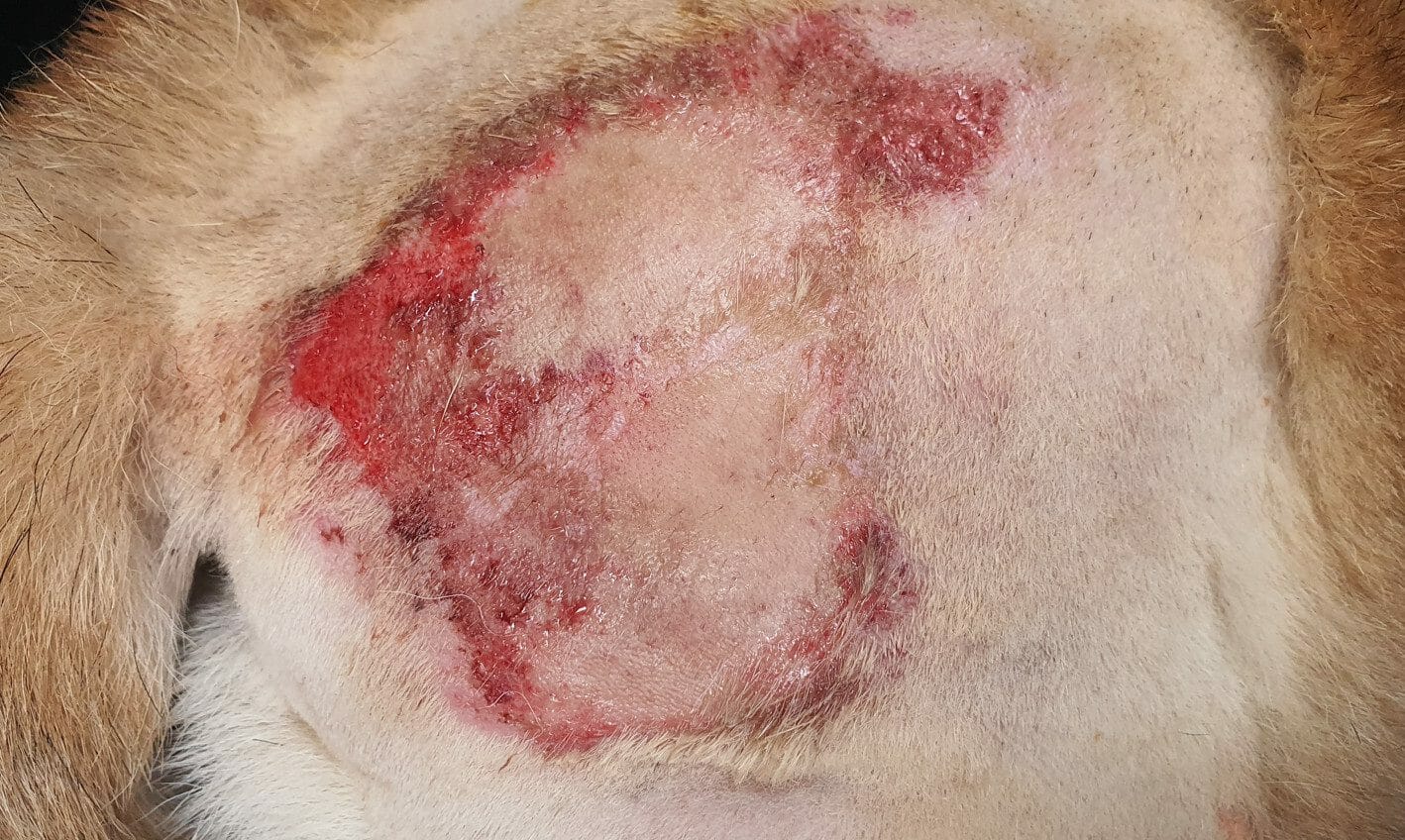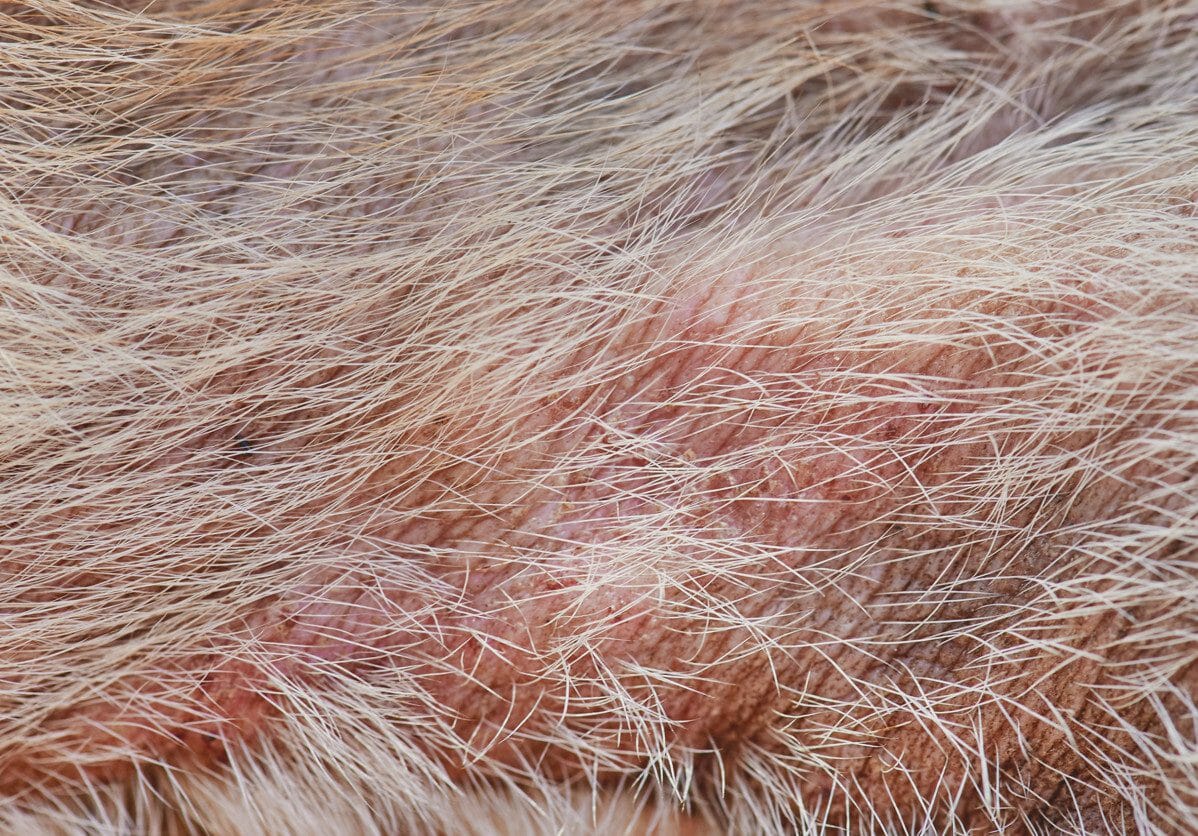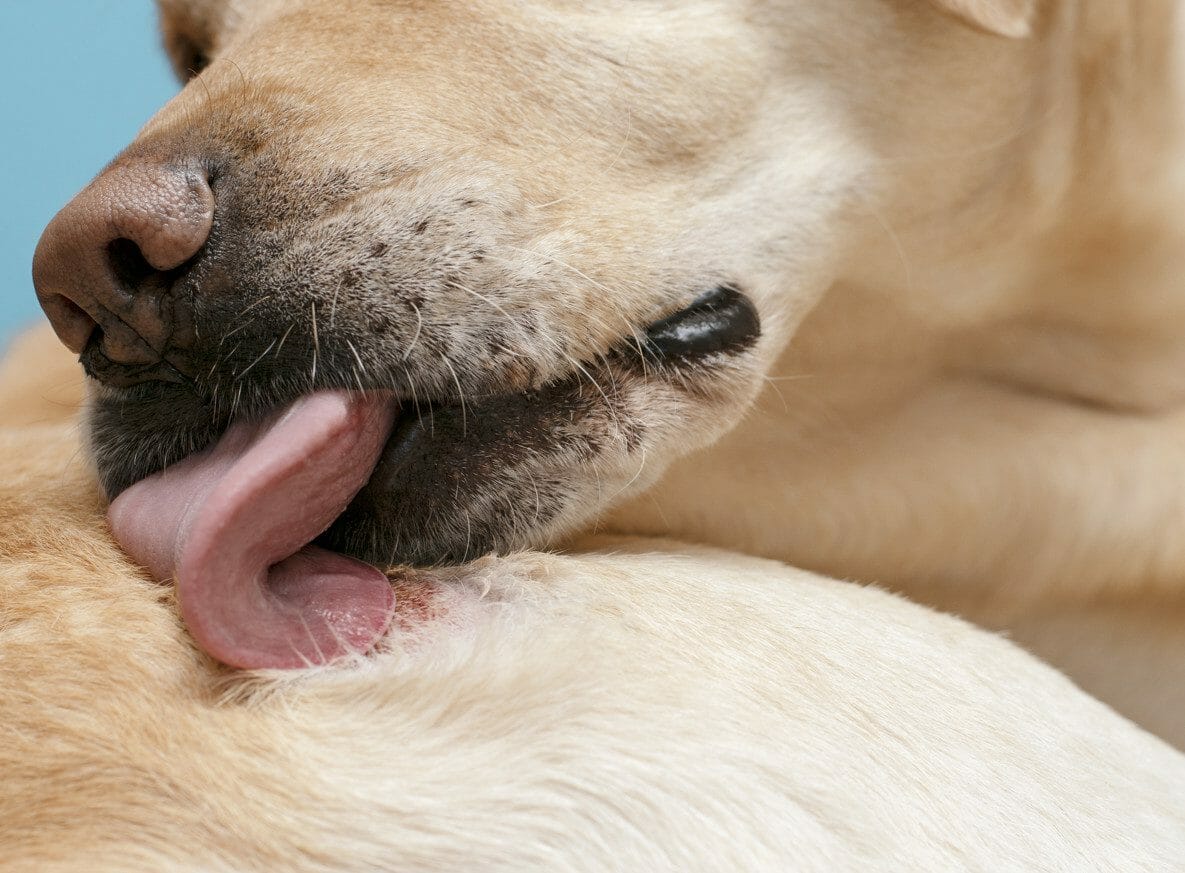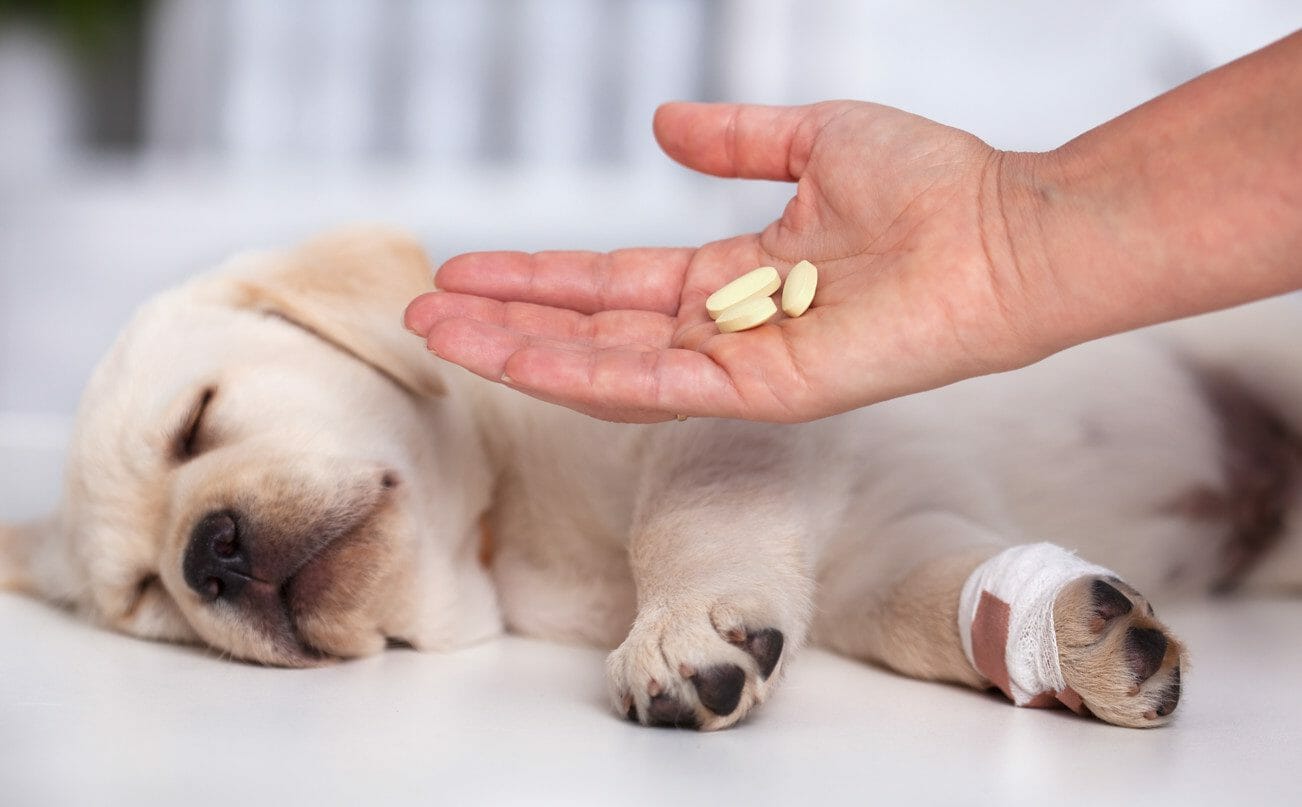Skin Infection in Dogs
Out of the 160 diagnosable skin conditions that can afflict dogs, infections of the skin (pyoderma) are undoubtedly the most diagnosed and treated. Although these conditions can be brought on through a number of ways, a dog can contract a skin infection through something as minor as a cut in the flesh.
Although it may be minuscule, an open wound can irritate the dog enough to cause it to scratch and lick it. This exacerbates the wound and turns it into an ample breeding ground for bacteria to grow and spread.
Often going by the more scientific name of pyoderma, skin infection in dogs ought to be taken seriously by the dog’s owner. Although they may be easy to overlook, these infections can spread and worsen if left untreated for a long period of time. Therefore, if the noticeable signs of a skin infection begin developing in a dog, it is highly advised a vet be consulted promptly.

What is Pyoderma?
According to its definition, pyoderma in dogs translates to “pus within the skin.” Given the tender, often painful symptoms that accompany a skin infection, this name is quite accurate. These skin conditions occur when an open lesion of some sort afflicts the skin. In most cases, the infection usually enters when the dog agitates the lesion, exposing it to bacteria.
Pyodermas is normally characterized as either a simple or complex infection.
- Simple Infections: One-time events that can be caused by things like mites or fleas.
- Complex Infections: These infections are marked by chronic, recurrent bouts of infection. Health issues such as autoimmune disorders, allergies, and parasitic diseases are common sources of this type.
Although most of these infections occur on the surface level of the skin (known as the epidermis), others can manifest deeply within the dermis (deep layers of the skin). The deeper the infection, the more predominant the outward appearance is.
Furthermore, whatever type of infection is occurring in a dog, it can be fungal, bacterial, or parasitic in its makeup. However, bacterial skin infections are the most widespread. When the dog is brought to the vet, the vet will be able to identify which type of pyoderma it is and will treat it accordingly.

Skin Infection Symptoms in Dogs
When a canine is contending with a skin disease, it is usually more than obvious to the dog’s owner. Whether the infection itself is spread throughout the skin or confined to one area, it is usually inflamed, tender, and raw. Red, splotchy pustules often cover these tainted areas.
Upon viewing pictures of the infection sites, it is understandable to most why dogs experience immense discomfort from it. Listed below are the main signs of skin infection seen in dogs:
- Painful bumps filled with pus
- Agitated behavior by the dog (head-shaking, pawing, licking the affected area)
- Dry, crusted skin
- Shedding and hair loss
- Skin that is reddish-pink (inflamed) or discolored
- Discharge emanating from the lesion
It is urgent the dog be taken to a knowledgeable vet for examination as soon as these signs arise. This will allow the dog to be treated quickly, which will help in relieving the immense discomfort the dog will be feeling.
Due to the fact that many of these symptoms coincide in their manner of manifestation, it is usually easy to tell that a skin infection is taking place. However, it is ideal for a vet to do an examination and any further analyses needed to formally diagnose the dog.
Causes of Pyoderma
As previously mentioned, pyoderma is brought on by a laceration in the skin. It is often made worse by the dog further agitating the already inflamed area. This disturbance in the skin’s natural bacteria can prevent healing from taking place. Infection can then reside in the open wound uninhibited. In cases of a bacterial infection specifically, the source lies in the Staphylococcus (or Staph) bacteria.

Sources of Infection
There are a myriad of potential medical-based problems that may cause a dog to be predisposed to contracting pyoderma:
- Severe burns on the skin
- Skin cancer
- Tumors around the skin
- Poor diets
- Food hypersensitivity
- Allergies
- Disorders stemming from the endocrine system, such as Cushing’s disease or hypothyroidism
- Flea, mite, or other parasite infestations
- Poor immune system functioning
- Medications or steroids that suppress the immune system
The triggers for skin conditions are numerous and diverse. Because of this, many dogs deal with some type of severe to mild pyoderma during their lifetime.
Can Skin Infections Occur in Puppies?
Although most frequently seen in adults, puppy pyoderma is also a prevalent condition. In puppies, this condition is known as impetigo. It often affects the body parts of the puppy with the least amount of hair. The abdomen, groin, and underarms of the puppy are the location of most skin diseases.

Treating Pyoderma in Dogs
If an infected dog is brought in quickly for assessment and treatment by a vet, the infection is likely to go away fully in a matter of weeks. However, if a visit to the vet is delayed, this could not only be hazardous to the dog’s health, but it could aggravate the state of the skin considerably.
In bacterial infections, an antibiotic will be prescribed by the vet to be taken for up to 4 weeks, or until the vet sees fit to stop. In dog fungal infections, antifungal treatment will be given. Depending on the type of infection, the vet will prescribe an appropriate medication that can be administered either topically or orally.
Commonly Prescribed Antibiotics
In nearly every case of infection, bacteria are the culprit. Therefore, to combat this, an antibiotic (such as those listed below) will likely be prescribed:
- Clindamycin
- Amoxicillin
- Cephalexin
For more severe infections, enrofloxacin (Baytril) may be given.
The most critical aspect of treatment for pyoderma in dogs is following the vet’s orders to the fullest extent. Antibiotics must be given to the dog until it runs out. Otherwise, the infection may return since the antibiotic was not allowed to finish working in the dog’s system.
If the pyoderma appears to worsen or new symptoms pop up, the vet must be seen quickly. Other than this, as long as the vet’s directions are followed as closely as possible and barring further complications, the dog should recover quickly.



